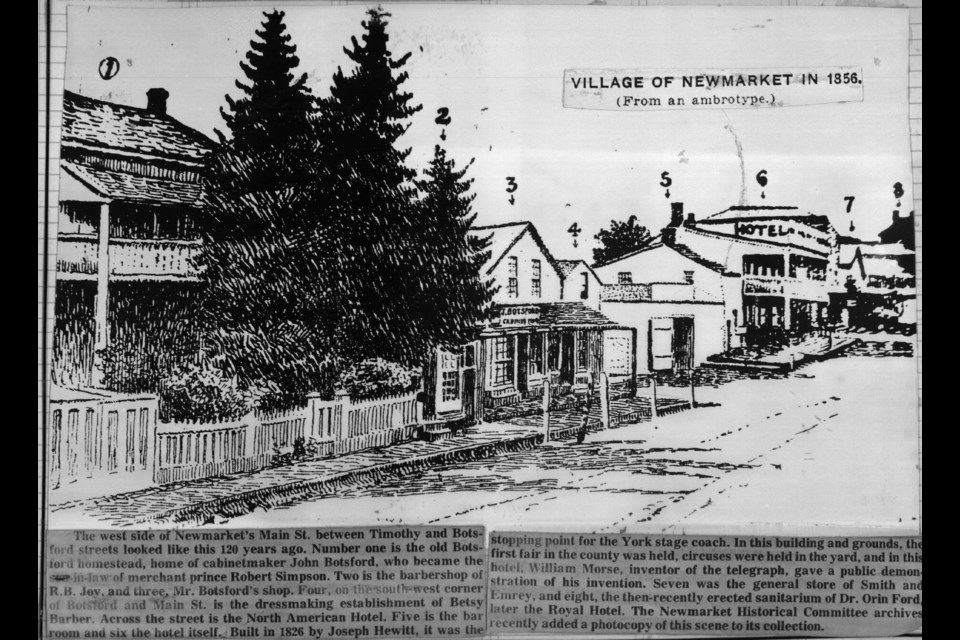Let's delve into the meanings of some of the terms that I have been using in my series of articles for the various forms of human settlement.
The main ‘units of settlement’ used since our first arrival are roadhouse, hamlets, villages, towns, cities, and metropolises. I'll focus on the four smallest units that constitute much of the old York County.
In Canada, we primarily utilize the ‘English settlement hierarchy,’ which has proven an effective method of arranging settlements into a hierarchy based upon their population, service or some other criteria. These terms are used by most historians when discussing population patterns and growth.
The smallest settlement type is the roadhouse, which is a small mixed-use premises typically found near a major road or path in a sparsely populated area that services passing travellers and generally consists of just a single dwelling. This unit is also referred to as a homestead or farmstead if it has only one occupied dwelling with or without adjacent buildings and is occupied by a single extended family. It could consist of one to five buildings or elementary families.
A settlement is a hamlet if it has two or more non-adjacent occupied buildings, at least one of the buildings in the settlement is a chapel or a courtyard farm. Hamlets typically sport a small population usually under 100 and usually constitute an unincorporated community.
Usually, all settlers in a hamlet are centred around one economic activity. For example, a hamlet may be centered around a farm, harbour or mill. Since hamlets are typically small, only a few families tend to live there. Unlike villages, hamlets do not have churches, town halls or any administrative or central building. To identify a hamlet, try to picture a handful of houses dotted along a road or a crossroads, perhaps separated from other settlements by an expanse of countryside or farmland.
A village is a settlement or community that is larger than a hamlet but smaller than a town. The population of a village tends to vary from a few hundred to a few thousand. You will remember Newmarket was incorporated as a village in 1857. As a village, our governmental structure featured a reeve and simplified government structure. This was to change when we become incorporated as a town with a mayor and council.
A village has several non-adjacent occupied buildings, at least one parish church or equivalent building, at least one building of a secondary sector, such as a mine, factory, workshop, or shop — or in other words has at least a building that is not agricultural or residential and does not meet the criteria for being a town.
In most villages, dwellings are clustered around a central point, perhaps a marketplace, a public space, or church. This type of a village is known as a nucleated settlement. There is also another type of settlement known as a linear settlement. These villages are not clustered around a central point but along a line such as a major road or railroad.
In the past, villages grew as small farming communities, the population living off the land they farmed themselves. Villages may be close to towns or larger urban areas, but still identify as a small collection of houses, centred around a central square.
For a settlement to be a town, it must meet seven criteria. First, it must have sufficient buildings befitting a town, for instance, buildings of two or more storeys. It must be granted the status of a town through incorporation and must have a town council. Next, the settlement must has sufficient facilities, including plenty of shops, sport facilities, entertainment venues, or transport facilities such as a bus or railway station.
The settlement must be perceived as a town by the regional population and not perceived as being rural. Finally, the settlement must have a minimum population from 5,000 to 10,000 people.
There are any number of definitions as to when a settlement becomes a city. The key element is that a government body has recognized the settlement as a city and so has designated it as such.
Often, the distinction between a town and a city is a matter of a decision by the local government to incorporate as such. As we have seen locally, the move up the ladder is often undertaken by the population and its representatives by a plebiscite and then a petition. We, in Newmarket, petitioned to become a village and then a town. I suppose, if there was a unified will, we could petition for city status. Vaughan, Markham and Richmond all became cities in York Region as their populations grew.
In our area, many hamlets were incorporated into existing town structures and simply disappeared. Some hamlets still exist and have chosen to maintain their status as such.
In the case of Newmarket, we chose to become a village and when the time was right, we chose to become a town. This would indicate that a settlement’s future could be, in part shaped by the will of the population and its representatives.
Sources: The Village - National Geographic Society ; Urban processes and planning; an Introduction by Professor Dr. G. J. Ashworth and Professor Dr. H. Voogd; The Newmarket Era; Oxford Dictionary; The Difference Between; Quora; City Data; Historical Terms Defined by Peter Oliver; History of Newmarket by Ethel Trewhella; Stories of Newmarket – An Old Ontario Town by Robert Terence Carter
Newmarket resident Richard MacLeod, the History Hound, has been a local historian for more than 40 years. He writes a weekly feature about our town's history in partnership with Newmarket Today, conducts heritage lectures and walking tours of local interest, and leads local oral history interviews.



